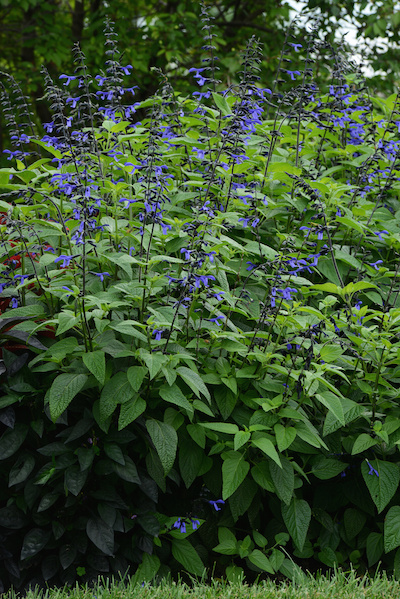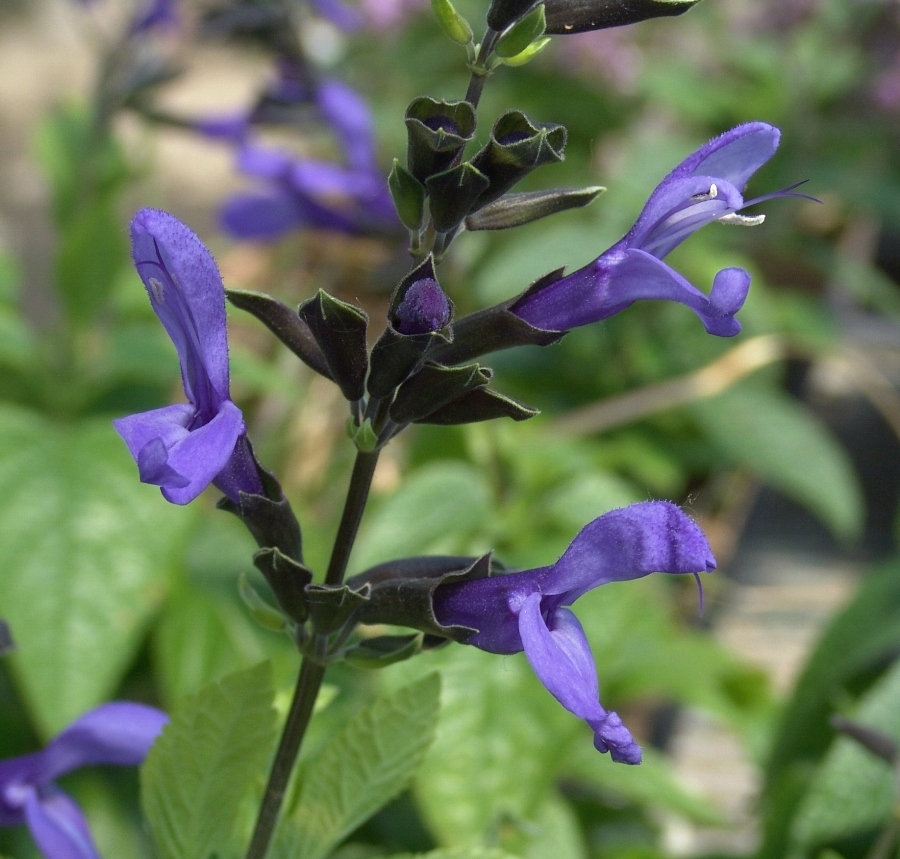
May Night Salvia (S. nemorosa ‘Mainacht’). Photo courtesy perennialresource.com
A lot of us love salvias, but unfortunately none of the hardy perennial types blooms all summer. That includes May Night, Caradonna, East Friesland, Color Spires Crystal Blue, Purple Rain and other popular perennial salvias.
These are the ones with the gorgeous stalks of intense blue blooms this time of year. The New Dimension salvia series has a beautiful rose one that calls to me every time I’m at the garden center. There are white varieties, too. But these beauties are done, usually by mid to late June. Even if you deadhead them, they just don’t bloom all summer, which is what most of us want.
Annual salvias are the answer.
Victoria Blue, Blue Bedder, Blue Frost and Mystic Spires Blue (Salvia farinacea) are just a few of the annuals or tender perennials that provide flower spikes similar to their hardy perennial siblings. These beautiful annuals bloom all summer and well into fall because they tolerate cool temperatures. As an added bonus, sometimes these plants self sow or die back to the ground to return the next summer.
Bees, butterflies and other pollinating insects enjoy these plants during the summer and finches snack on the seed heads that are left up in winter.
These annual salvias do best in full sun, but they tolerate light shade and are somewhat drought tolerant. Plant them in the ground as a summer annual, mix them in with perennials or use them in containers. I frequently use them as the centerpiece in pots as an alternative to spikes.

Black & Bloom salvia. Photo courtesy ballhort.com
Another tender perennial salvia that we grow as an annual is the popular Black and Blue, sometimes called hummingbird sage (S. guaranitica). Black and Blue, and a newer introduction, Black & Bloom (S. coerulea), have a completely different form than the ones mentioned above. They get their name from their dark black calyx and vivid, cobalt blue blooms.

Black and Blue salvia. Photo courtesy Monrovia.com
They are a much larger, open plant, more shrub-like at 3 feet tall and wide. Indeed, hummingbirds, bees, butterflies and other beneficial insects enjoy these salvias, too. For the best performance, grow these in full sun. Although large, these salvias could also be grown in a large pot for the summer.
All of the salvias can be cut for indoor flower arrangements. And yes, sage is the common name for this plant family, which includes the herb sage (S. officinalis).